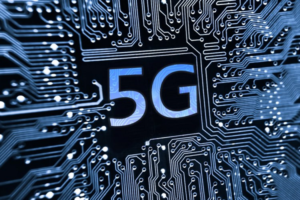
While many telecom network technology vendors are claiming that the wait for fifth generation, high-speed wireless service (5G) is finally over, the full transition to 5G will not happen in 2018, according to leading data and analytics company GlobalData.
Ed Gubbins, Senior Telecom Technology & Software Analyst at GlobalData says: “There are differing perspectives over whether 5G is finally here. For vendors selling 5G gear, basically it is. For consumers, depending on where in the world they live, it’s coming soon. But for operators – in the sense that really matters to them, namely new revenue and profit – the wait will continue.”
Network equipment vendors have been promoting mobile base station gear as ‘pre-5G’ and ‘5G-ready’. In Q1, 2018, when vendors announced 5G base stations would be available starting later this year, the news carried more weight. This is because the industry standards groups defining 5G’s common specifications finalized the first 5G standards in December 2017, allowing vendors to bring products to market based on those standards this year.
Gubbins continues: “Some mobile operators and vendors have been using the term ‘5G’ to label residential broadband services delivered over fixed, point-to-point wireless networks to users’ homes, typically handed off to Wi-Fi within the home.
“Verizon, which was early to trial this technology – based on high-frequency millimeter-wave spectrum – has been particularly vocal about promoting this as ‘5G,’ since it allows it to claim it’s providing 5G service earlier than its competitors. Likewise, suppliers of the wireless networking gear for these rollouts are keen to call it 5G. However, today’s 4G LTE subscribers will generally think of true 5G not as a fixed, but as a mobile service.”
While the first big, global wave of 5G services will be aimed at consumer mobile broadband that is faster than today’s 4G, faster speeds are not exactly what separate 5G from 4G.
The real defining promise of 5G is to allow operators to connect both people and machines with a common network, thereby attaining greater efficiency and profitability than any previous generation. That depends on the development of new business cases and new market adoption that the mobile industry has not seen before and does not well understand.”
Gubbins concludes: “Smartphones that support 5G are not expected until 2019. Though some operators, such as AT&T, have promised to roll out 5G service sooner, it can only be delivered to less popular devices like mobile hotspot ‘pucks’ and ‘dongles’ – mere preludes to the mass market.
“Early 5G services are expected to launch in the US, Korea, Japan and China, primarily due to a mix of consumer demand, competitive pressure and 4G network maturity in those markets. Once this happens and 5G devices spread, then 5G can be said to finally be here.”
For more information visit GlobalData.



















